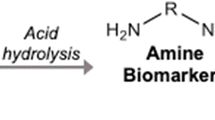Abstract
Objectives: This article reports the results obtained with the biological and environmental monitoring of occupational exposure to cyclohexane using 1,2-cyclohexanediol (1,2-DIOL) and 1,4-DIOL in urine. The kinetic profile of 1,2-DIOL in urine suggested by a physiologically based pharmacokinetic (PBPK) model was compared with the results obtained in workers. Methods: Individual exposure to cyclohexane was measured in 156 workers employed in shoe and leather factories. The biological monitoring of cyclohexane exposure was done by measurement of 1,2-DIOL and 1,4-DIOL in urine collected on different days of the working week. In all, 29 workers provided urine samples on Monday (before and after the work shift) and 47 workers provided biological samples on Thursday at the end of the shift and on Friday morning. Another 86 workers provided biological samples at the end of the work shift only on Monday or Thursday. Results: Individual exposure to cyclohexane ranged from 7 to 617 mg/m3 (geometric mean value 60 mg/m3). Urinary concentrations of 1,2-DIOL (geometric mean) were 3.1, 7.6, 13.2, and 6.3 mg/g creatinine on Monday (pre- and postshift), Thursday (postshift) and Friday (pre-shift), respectively. The corresponding values recorded for 1,4-DIOL were 2.8, 5.1, 7.8, and 3.7 mg/g creatinine. A fairly close, statistically significant correlation was found between environmental exposure to cyclohexane and postshift urinary 1,2-DIOL and 1,4-DIOL on Monday. Data collected on Thursday and Friday showed only a poor correlation to exposure with a wide scatter. Both metabolites have a urinary half-life of close to 18 h and accumulate during the working week. Conclusions: Comparison between data obtained from a PBPK model and those found in workers suggests that 1,2-DIOL and 1,4-DIOL are urinary metabolites suitable for the biological monitoring of industrial exposure to cyclohexane.
Similar content being viewed by others
Author information
Authors and Affiliations
Additional information
Received: 17 June 1998 / Accepted: 23 September 1998
Rights and permissions
About this article
Cite this article
Perico, A., Cassinelli, C., Brugnone, F. et al. Biological monitoring of occupational exposure to cyclohexane by urinary 1,2- and 1,4-cyclohexanediol determination. Int Arch Occup Environ Health 72, 115–120 (1999). https://doi.org/10.1007/s004200050346
Issue Date:
DOI: https://doi.org/10.1007/s004200050346




